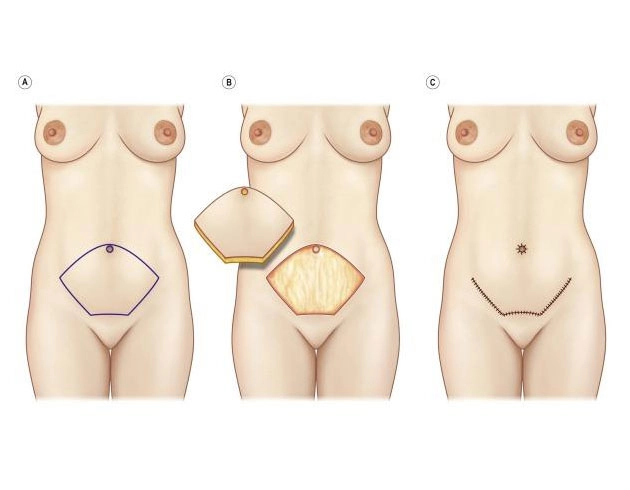Abdominoplasty
A abdomen that is flat and muscular is often depicted by artists, painters and sculpters throughout ancient history.
Many people find that after ageing, weight loss, or pregnancy, they are left with pockets of fat, excess skin, striae and weakened muscles in the abdomen. Abdominoplasty or (Tummy tuck-pop culture term) can be performed to surgically remove excess fat and skin from the abdomen, tighten the abdominal muscles, and reposition the umbilicus (belly button).
Video: Learn about Abdominoplasty
Learn about Abdominoplasty
What can be achieved?
Change to Abdomen
In addition to removing excess fat and skin, abdominoplasty is also designed to provide the midsection and surrounding areas with a changed shape (narrow mid section and waist). The midsection is reduced, and the abdominal muscles are tightened.
Pre-Pregnancy Body
After pregnancy, most women develop weakened abdominal muscles as a result of the physiological expansion of the uterus, and these muscles are also separated. The muscles do not always revert back after childbirth and may need to be surgically repaired. The weight gained during pregnancy may place stress on the soft tissues and result in dermal scars/striae (stretch marks) in addition to excess fat and skin. Abdominoplasty can repair the separated muscles, and remove excess skin and fat from the lower abdomen.


37 Year Old Abdominoplasty and Liposuction


45 Year Old Tummy Tuck + Abdominoplasty


57 Year Old Tummy Tuck + Abdominoplasty
PROCEdURE SNAPSHOT
3hr
Procedure
2-3 nights in hospital
3 weeks unsociable
Qualified specialist plastic surgeon:
- World-trained plastic surgeons
- Qualified Anaesthetist, Accredited hospital
Results: Removal of excess skin, fat and repaired muscles
Investment
You will feel:
Abdominoplasty/Tummy Tuck Surgery TECHNIQUES
- An incision is made along the lower abdomen (concealed by underwear) and around the umbilicus.
- The abdominal “apron” is lifted up towards the rib cage.
- The underlying rectus muscles are repaired and tightened.
- Excess skin and fat are removed, and the umbilicus is repositioned.
- The standard abdominoplasty is combined with liposuction.
- Liposuction involves the use of a small, thin tube (cannula) to break up and remove fat cells from the midsection, flanks, and surrounding areas.
- The abdominal muscles are tightened, and excess skin and fat are removed.
- The result is a narrower waist line.
- The standard abdominoplasty is combined with the technique of placing tension laterally on the abdominal flap and the incision extending toward the hip bone.
- This technique which is suited for massive weight-loss patients who want to address ptosis in the thighs.
Figure 1

Routine Abdominoplasty Incision with Removal of skin and fat after tightening of the rectus muscle.
Figure 2

a) Abdominal flap illustrating underlying rectus muscle that will be sutured together.
b) and c) Abdominal flap pulled down prior to removal of skin and fat.
Common Concerns
Although tummy tuck surgery (abdominoplasty) does involve a large incision, scarring can be easily hidden below the bikini area and can be concealed under most clothing. Depending on the patient’s skin tone and level of healing, scarring will fade and become less noticeable with time.
Our specialist plastic surgeons offer customised abdominoplasty surgery designed to meet each patient’s individual goals. Depending on the patient’s anatomy and the extent of the procedure, pricing will vary. The cost will also differ based on hospital fees, anaesthesia fees, and other related fees.
Minimal pain and discomfort are normal after surgery. For the first few weeks after a tummy tuck (abdominoplasty) procedure, you should expect some soreness, tightness, and swelling. Medication will be provided to alleviate any pain.
FAQs
As Seen On






"*" indicates required fields








